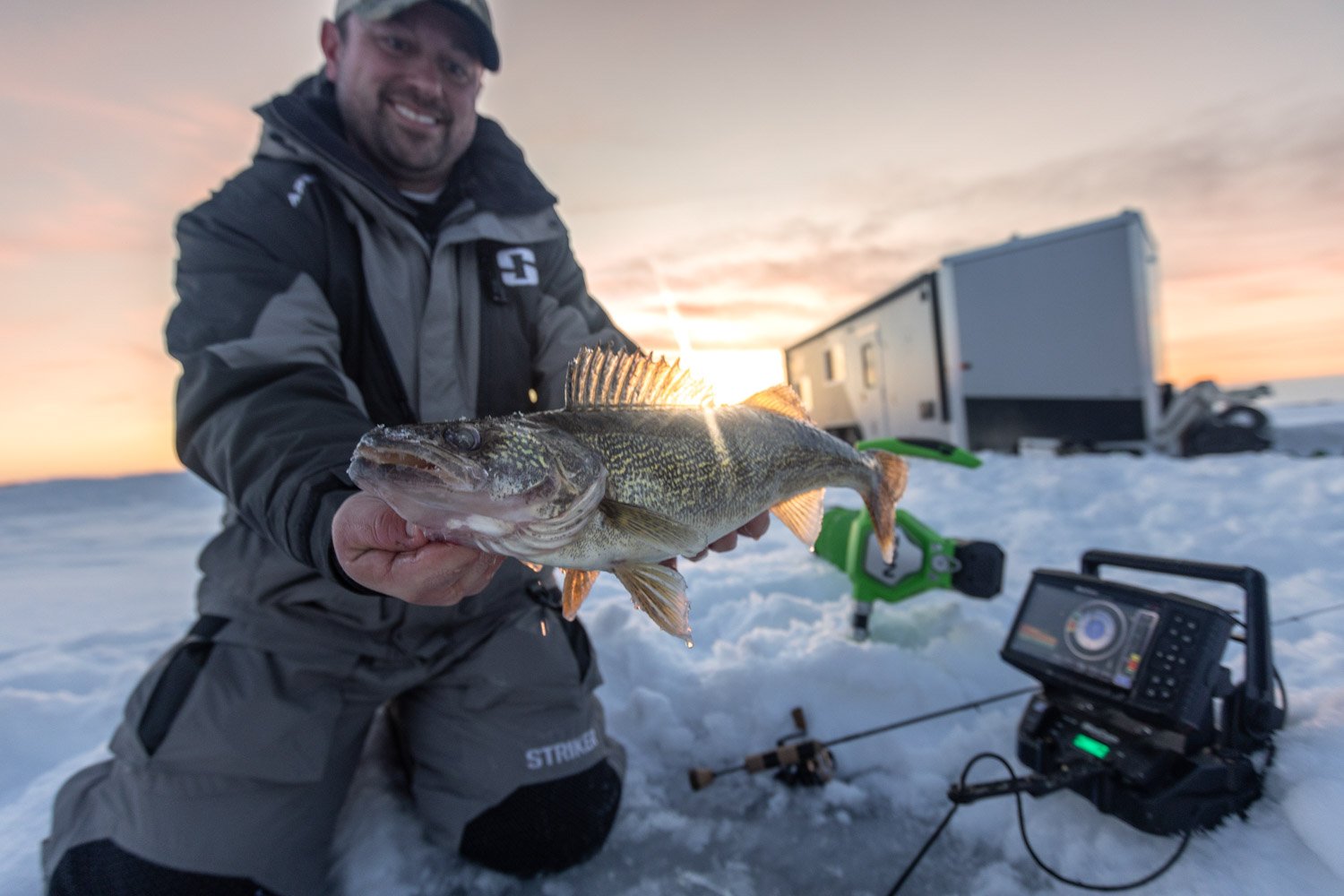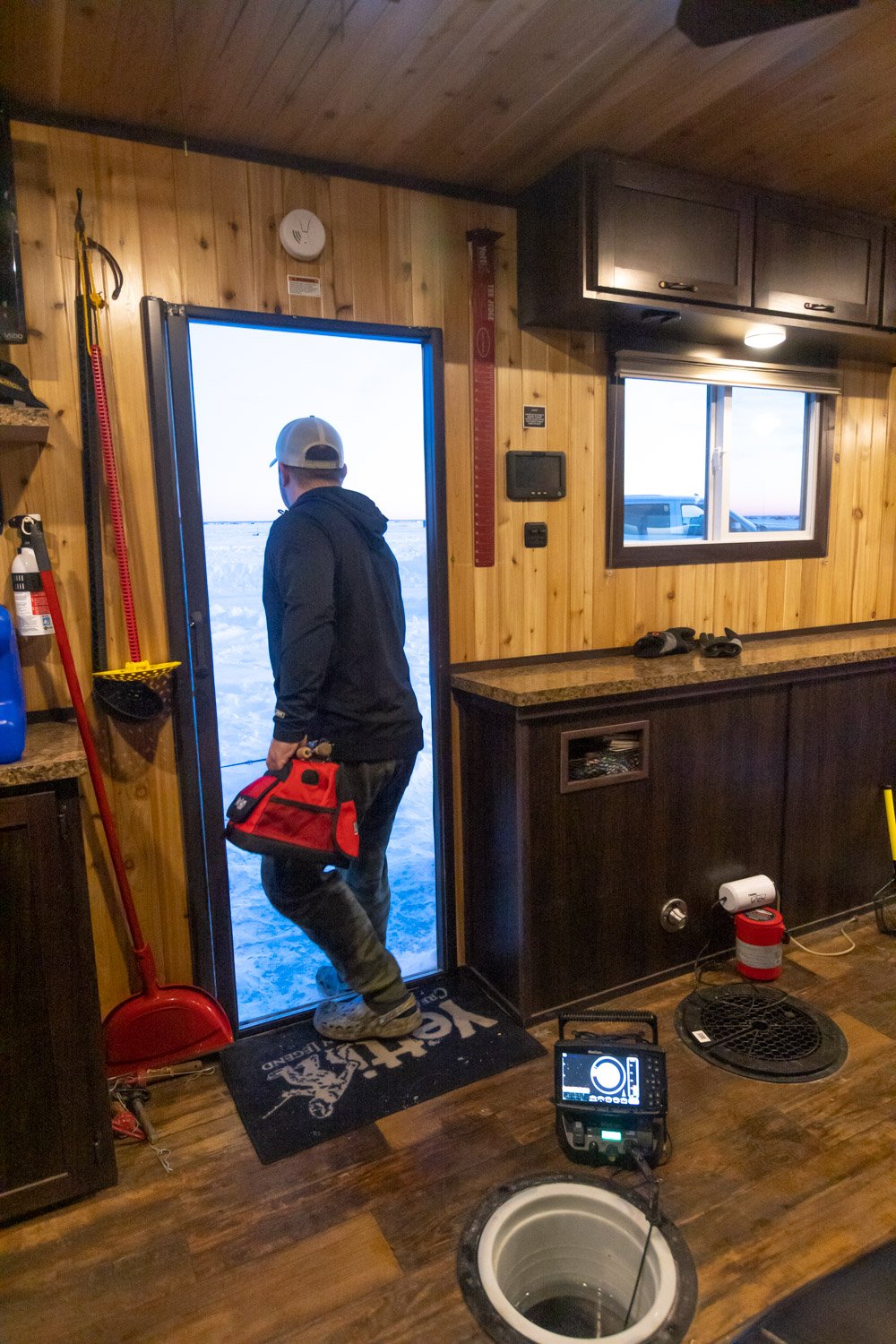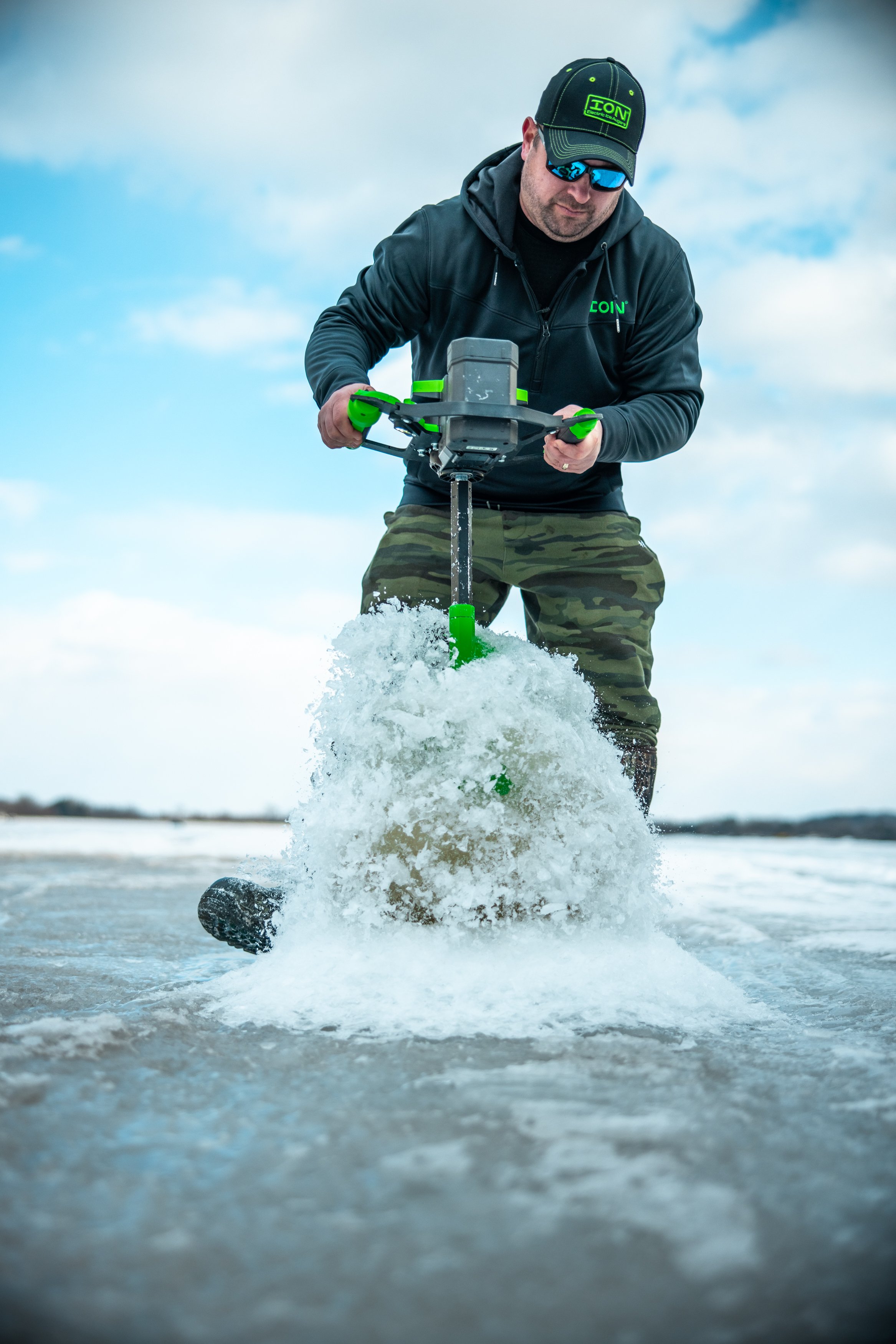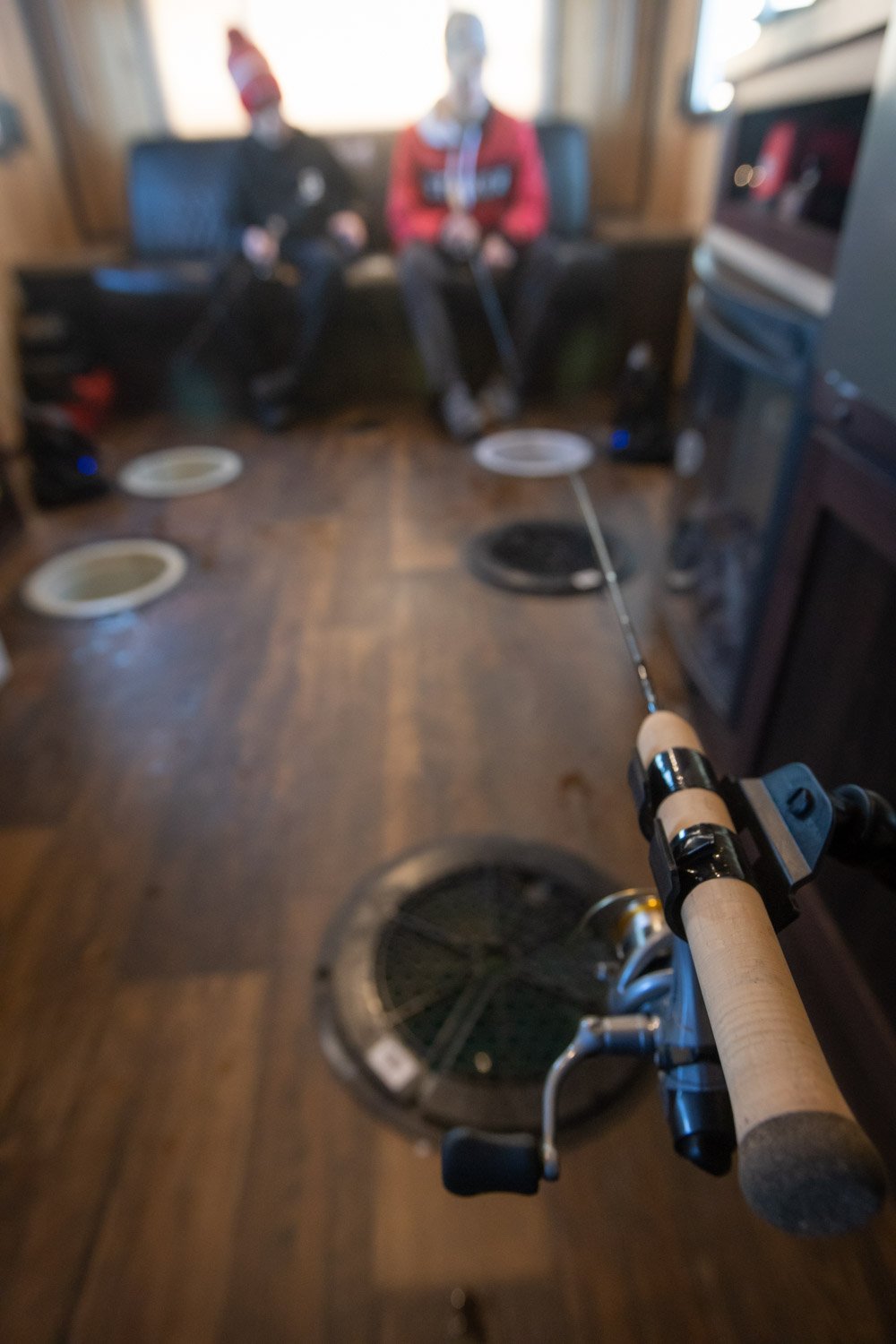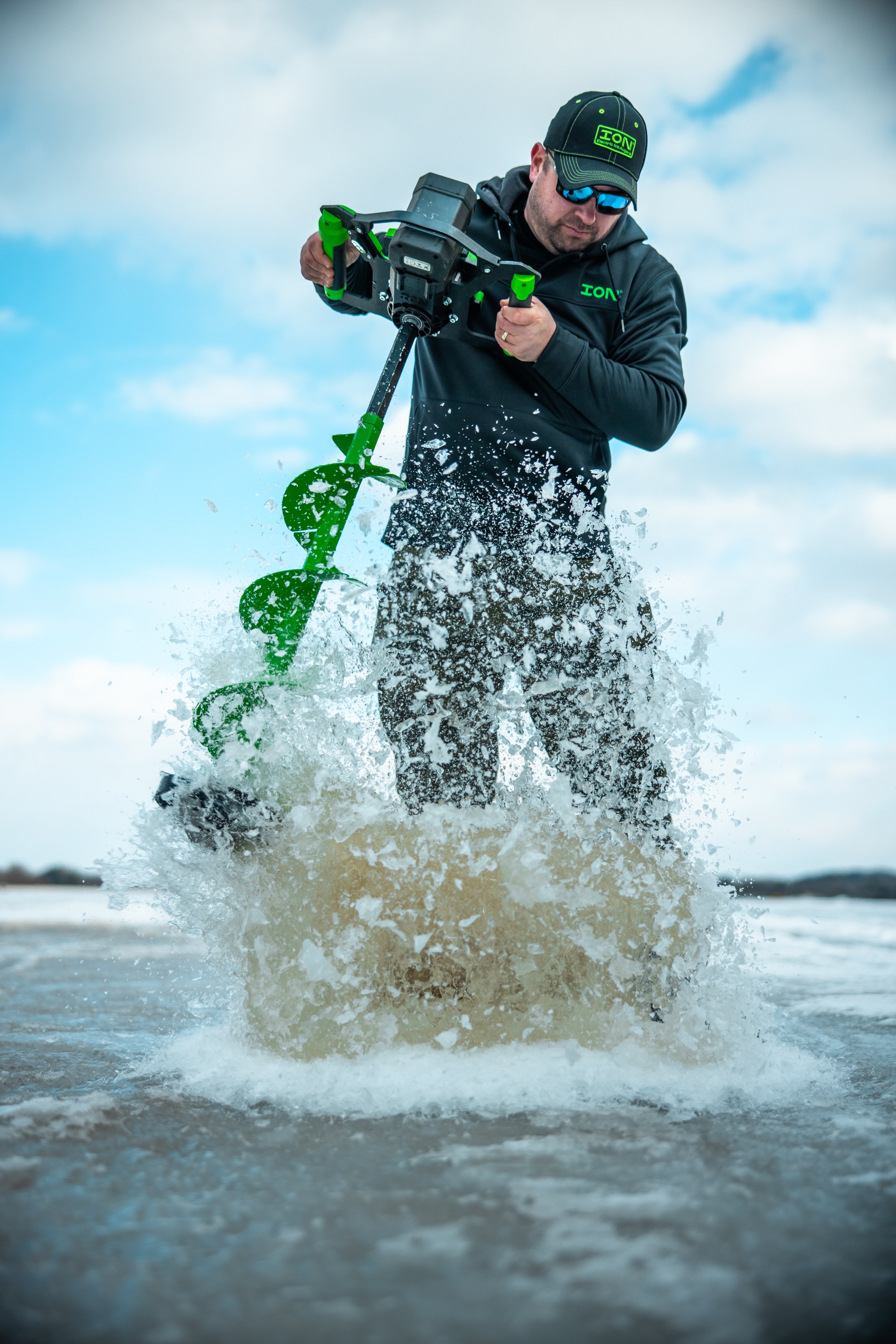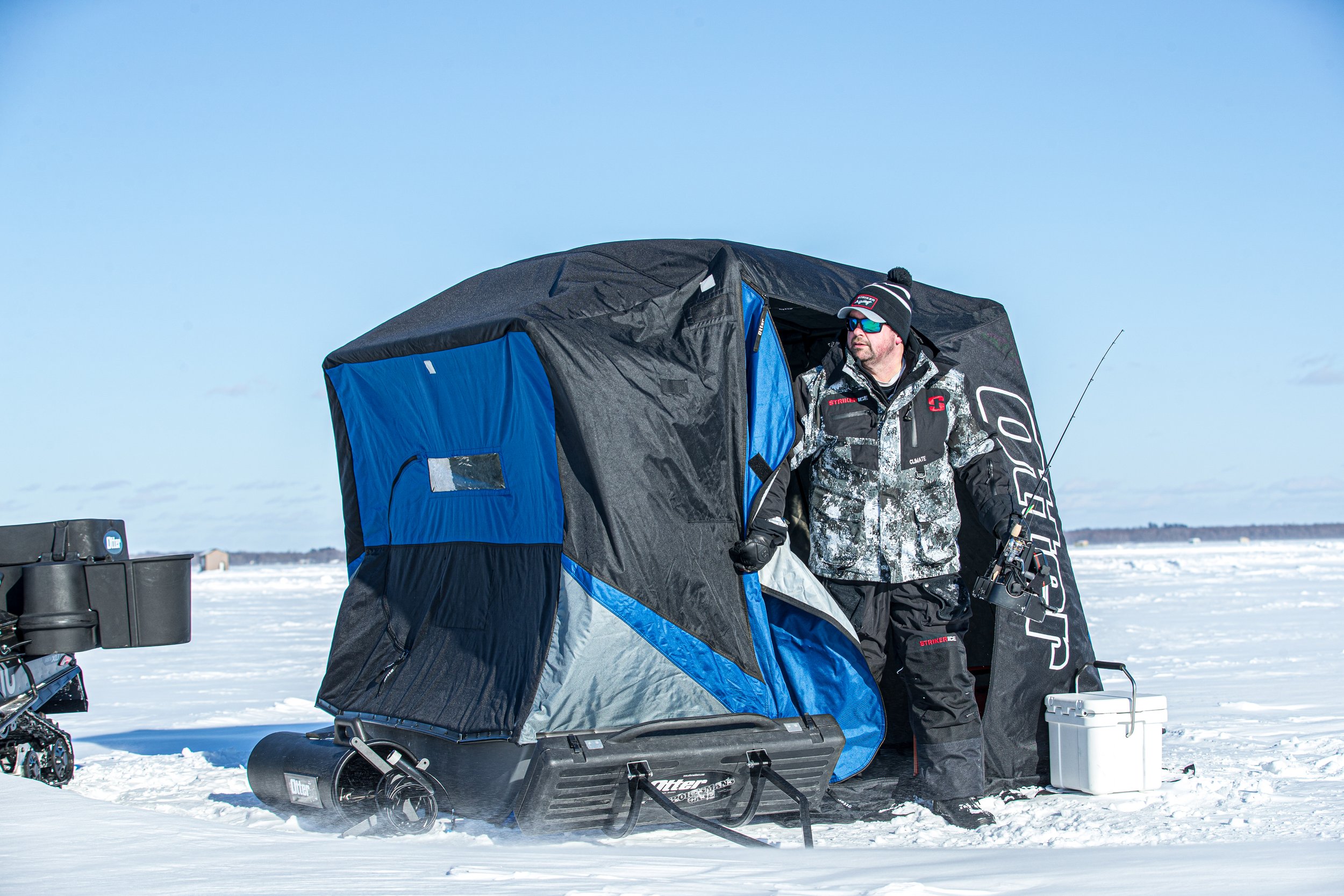Fishing Outside the Wheelhouse
There’s much to be said for the comfort, convenience, and sheer enjoyment of fishing inside the wheelhouse. You’ve invested a considerable sum of money, and likely the time it takes to trick it out. Surely, it would be madness to embrace the idea of fishing outside the very shelter you worked to make comfortable inside. That’s what I’m suggesting you should do. From time to time anyway. There’s a host of situations, and methods for getting the most from your wheelhouse experience, which revolves around a bit of outside time.
Wheelhouse Setup
Quite often, I’m considering my options for outside fishing, as well as fishing inside the wheelhouse, before I ever lower it to the ice. On classic structure situations, where I’m setup on top-of, or the edge of prime real estate, I’m typically expecting fish to push up and feed during low light hours. In that scenario, I’m trying to park near a host of interesting structural features to cover a variety of ways.
Tip-ups, Finicky Foolers, or I-Fish Pro setups are great to monitor the tops of reefs, or nearby depths at the base of the break, provided you can set them within legal distance of your shelter and still cover the piece of structure you’re on. As a deer hunting analogy, consider them a trail camera that gives you visual confirmation that the fish have arrived. Use the extra lines available to you with additional anglers to cover shallower and deeper, then let the fish and their patterns dictate how you proceed. There have been times where I’ve found an incredible all day bite and actually moved the Yetti because of all the fish I’m getting on tip-ups in a certain area. Other times, I’ve been able to determine key time periods to hole-hop versus sticking it out in the shelter.
If I’m with a group of like minded anglers who wish to carve up some ice, I’ll often setup the wheelhouse on a small point, indentation, or other piece of structure along a breakline. The idea is that I’m going to retreat back to the shelter again during low-light, but spend many of the waking hours in two groups. One group works up the breakline, drilling holes and dunking baits, while the other group does the same in the other direction. There are times when we find some pretty cool bites, simply by deploying two teams in both directions. The wheelhouse then is more a base camp than it is a shelter, but should we locate a piece of unmapped structure, a pod of baitfish, or huge school, we’ve always got the option to move the wheelhouse.
Portable Options
While it may sound crazy to let a perfectly good wheelhouse sit empty, at times, I’m employing a portable shelter option along with the wheelhouse to enjoy fishing in different ways. It’s always nice to have a pop-up shelter along no matter where you’re fishing. For the money, they present a great deal of fishable space, but also the opportunity to stow an insulated shelter with little space requirements. They pack up quickly into a small bag, store well in the back of the truck, and serve as an outside outhouse should nature call and you don’t want to use the inside shelter.
Quite often I’ll setup near a pair of rockpiles with the wheelhouse on one, and my boys in a portable nearby. We keep tabs of fish location and spend time debating over who should move where. It’s a fun process, and also keeps stir-crazy types out there and active. The pop-ups are a bit simpler to move than even the hydraulic wheelhouses, so for small moves or fish that like to travel like perch, they can make a real difference when it’s extremely cold too.
One option that’s really fun is to spend some time shallow in the small portable popups during the day, if fishing on a lake with reasonable clarity. Finicky mid-day fish can be found on weed flats, but often it takes some visual confirmation to tease them properly. That’s where it’s nice to close all the windows in the pop-up and look straight down the hole to see fish inhaling your bait. It’s an addictive experience, and can again, break up the monotony of a multi-day trip with too many people in too small an area. Again, the wheelhouse is the perfect base-camp to launch these adventures from, even if you don’t fish exclusively out of it.
When to Fish Inside and Out
On the surface, it’s easy to say that you should fish low-light on the structure inside the wheelhouse, and hole hop around during the day. Often, it’s a bit trickier than that depending on your setup. I’m a firm believer of letting the fish tell me what to do, but it helps to know a bit about the fish before you commit to either location. Walleyes will simply travel more and be active during these low-light hunting periods, so it’s best to be stationary in general. Use the “lost in the wilderness” principle, where rather than searching for the search party, you stay hunkered down in a “findable” location instead of potentially wandering aimlessly away from fish that are also drifting away from you.
Similarly speaking, it’s best to go find fish during less active periods and put more baits in front of more sets of eyes. That’s easier said than done, and there are exceptions to that rule as well. During low light scenarios, if you’re fishing a big piece of structure, fish might be coming up to feed all along and around it. In the case of a lack of a clear spot from which they’ll approach, you can put more baits in front of more fish by doing some hole-hopping in an organized way. Often that comes in the form of depth ranges and pre-drilled holes. So often, early in the afternoon, fish start feeding near the base of a deep mud flat or reef, then work their way up incrementally over the last 30 minutes to two hours depending on the species. In that case, you’re not trying to hole hop from deep to shallow, you’re trying to ride the wave of fish feeding up the break. Careful observation of depths that held fish will keep you in the game here, and likely make fishing outside the house more productive. That is, at least until fish are really flying around and in the depth range that the wheelhouse is setup on.
On cold and blustery days, it’s often to your benefit to stay in the wheelhouse, and not just for comfort. I can think of many panfish bites, and quite a few walleye ones, where being able to precision place a bait in front of finicky fish, makes all the difference. Dealing with elements like wind-blown line, frozen line, and snowed-in holes makes it difficult to detect a bite, let alone seal the deal and bring it topside. Mid-winter begs for a rock-solid setup, where you can progress through lure types in a scientific kind of way. Park on the fish and offer them a smorgasbord, but be ready to really entice and study for bites in a way that simply can’t be done as well in nasty weather.
Too many anglers own a wheelhouse but don’t utilize it for the basecamp that it is, or consider what’s going on just a short distance around them. Utilize additional tools like tip-ups, pop up hub shelters, and lightweight augers with electronics to hole hop when needed. This swiss army knife approach to covering your bases makes you a more well-rounded angler, as well as a successful one.

